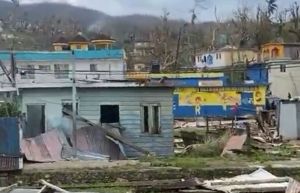In 2008 scientists noticed the icy bottoms of lakes on Greenland's Ice Sheet occasionally crack open, releasing the water to the base of the ice sheet thousands of feet below. Now, new research may finally explain the dramatic phenomenon.
A team of researchers from Woods Hole Oceanographic Institution (WHOI) and the University of Washington believe they have identified the mechanism that causes the ice sheets to suddenly drain over the course of mere hours. Scientists had theorized the lakebeds crack because of the weight of the water itself, but this did not explain why some of them cracked while others didn't.
"Our discovery will help us predict more accurately how supraglacial lakes will affect ice sheet flow and sea level rise as the region warms in the future," said lead author Laura Stevens, a graduate student in the Massachusetts Institute of Technology-Woods Hole Oceanographic Institution (MIT/WHOI) Joint Program in Oceanography.
To determine once and for all what causes these lakebeds to crack, the researchers deployed a network of 16 GPS units around North Lake, which is a 1.5-mile-long supraglacial lake in southwest Greenland. These instruments recorded ice movement surrounding the events of three major lake drainages in the summers of 2011, 2012, and 2013.
The data revealed in the six to 12 hours before the crack occurred, the ice around the lake moved upwards and horizontally. Meltwater started to drain through nearby systems of moulins that connected the surface and base of the ice sheet. This water accumulated to form a bulge, causing the entire ice sheet to float and creating tension underneath the lake that eventually causes it to crack.
"In some ways, ice behaves like Silly Putty--if you push up on it slowly, it will stretch; if you do it with enough force, it will crack," Stevens said. "Ordinarily, pressure at the ice sheet surface is directed into the lake basin, compressing the ice together. But, essentially, if you push up on the ice sheet and create a dome instead of a bowl, you get tension that stretches the ice surface apart. You change the stress state of the surface ice from compressional to tensional, which promotes crack formation."
Once the ice cracks, the water surges through causing the fault to widen and let even more water through in what are called "hydrofractures." The researchers documented these cracks could drain more than 11 billion gallons of water out of North Lake in only 90 minutes. The key finding of the study is that large volume of water is what causes the lakes to drain.
When the water drains it lubricates the interface between the ice and rock, causing the ice sheet to move towards the coast more quickly. This chain reaction accelerates the outflow of ice into the sea, making the sea level rise more rapidly. These findings could help scientists gain a better understanding of how the draining of these lakes could influence sea level rise under future climate conditions.
The findings were published in a recent edition of the journal Nature.
© 2025 HNGN, All rights reserved. Do not reproduce without permission.








